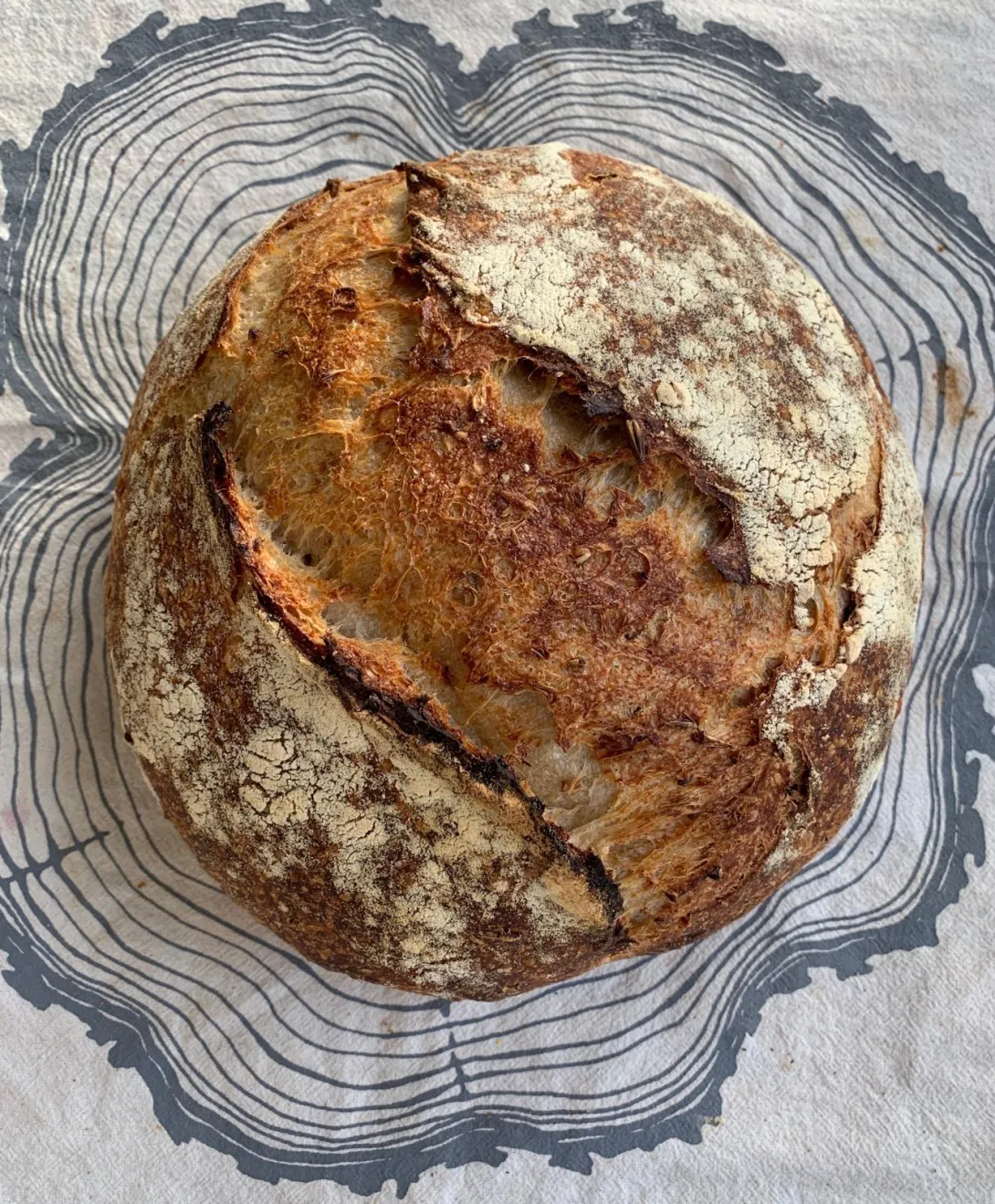The journey of sourdough

- Log in or register to post comments
- 1 comment
- View post
- Rustic Rye's Blog


I have made a few iterations of a naturally leavened whole wheat loaf with nuts and seeds. This loaf was inspired by Maurizio's 50/50 loaf (theperfectloaf.com) but I took the liberty of adding some seeds. As for the flavor, I can't get enough of it. I will find any excuse to eat a slice; whether it's a seed butter and jelly sandwich, a soup accompaniment, or with avocado and egg, it's a real treat. Despite the high proportion of whole wheat, the crumb opened up wonderful for a light and airy loaf.

I have been dipping my toes into breads with added goodies recently. My favorite part of bread with goodies is biting into a slice and getting a little surprise of olives/raisins/nuts/ etc. I think it adds a nice textural variance to the bread. I haven't made a loaf with olives yet, so when I found this recipe in Hammelman's Bread and had to give it a try. The loaves are about 65% hydration, 20% olives, 10% whole wheat, and naturally leavened. I ended up making a fougasse and a batard. Please excuse the large chunk of fougasse missing here. I couldn't resist. :)

Hello Fresh Loaf Community,
This is my first post on the site after reading recipes and browsing for the past several months. I have been really inspired and impressed by all the amazing bread I have seen here on TFL and want to join the conversation.
The loaf was made using spent beer grains obtained from Somerville Brewing (Boston, MA) and naturally leavened thanks to Stefano, my sourdough starter.